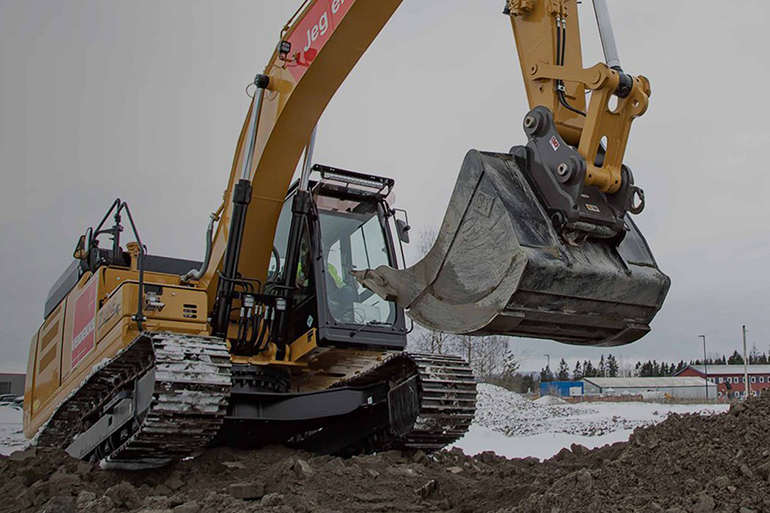All indications are that mobile and industrial systems of the future will be more automated and more digitally connected. And many experts contend future systems will also increasingly be low-carbon and electrified. Some construction equipment OEMs, for example, are committed to autonomous control and cloud-based maintenance systems, and next-generation machines that reduce the environmental impact or run on batteries. But if that’s what the future holds, how best to get there?

According to Niall Caldwell, Director of Danfoss Digital Displacement in Edinburgh, Scotland, “Some would say we’ve reached a fork in the road and we’ve got a choice to make as a society, and certainly as leaders of industrial companies.” One path is business as usual, where we continue to incrementally improve existing technologies, he said. But with mature technologies, particularly hydraulics, there are diminishing returns on further incremental improvements, and which may never fully meet future performance requirements.
Others contend that we need a green revolution and completely revamp our machines, perhaps with electromechanical drives and actuators, electrically powered by fuel cells. But these sorts of radical immature technologies come with a high cost and also a high risk, he cautioned. Many industries face a dilemma. Should they put their development money into conventional technology to keep pace with current market conditions, or put it into the green revolution and hope their investments eventually pay off?
Caldwell suggests a better path. “It’s what I call a green evolution, a technology which gives us an evolutionary path towards a revolutionary result, but with manageable risk and cost.”
Hydraulics is successful because it is compact and powerful, tolerant of harsh environments and shocks, and offers robust linear actuators, he continued. And lastly, it’s low cost, which often is the overriding consideration in many industries. But there are some fundamental limitations, including poor energy efficiency and challenging control by computer. Together, these could handcuff conventional hydraulics when future applications demand more automation, efficiency and electrification.
To address those shortcomings, Danfoss has introduced Digital Displacement Pump technology, what Caldwell calls “a fundamental reboot of hydraulic power for the 21st century.” At its heart is a software controlled, radial-format pump that enables and disables cylinders in real time, and results in extreme accuracy, quick response, multiple controllable outlets and dramatically improved efficiency, he said.
Users can integrate custom control functions into the software to enable automation of future systems. And it attains over 90% efficiency over the vast majority of the operating range. “This is unprecedented in hydraulic machines,” said Caldwell. “For the first time, we’ve got a technology which can offer similar efficiency characteristics to electric machines.”
Merely swapping a conventional analog pump with a DDP can cut excavator fuel consumption by 20% and with a 20% increase in productivity, he said. And next-generation system architectures will eliminate control valves and include regeneration to push fuel savings beyond 30%, or encourage electric prime movers.
“This is a technology which makes a business case as well as an environmental case.” Through fuel savings and higher productivity, a DDP system can pay for itself in short order, which is dramatically different from other more-revolutionary technologies, said Caldwell. “This is a vision for the direction of the industry where we can incrementally improve and evolve towards that highly efficient, revolutionary impact that we all aspire to, but with manageable technical risks and with manageable cost.”
Filed Under: Mobile Hydraulic Tips, Pumps & Motors